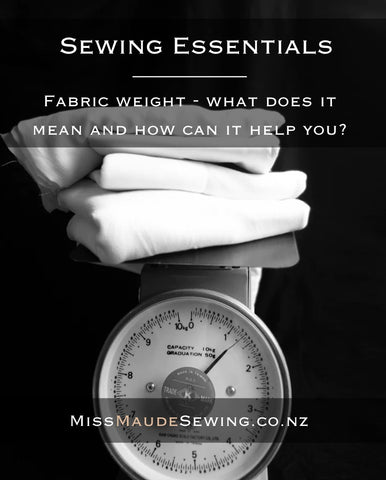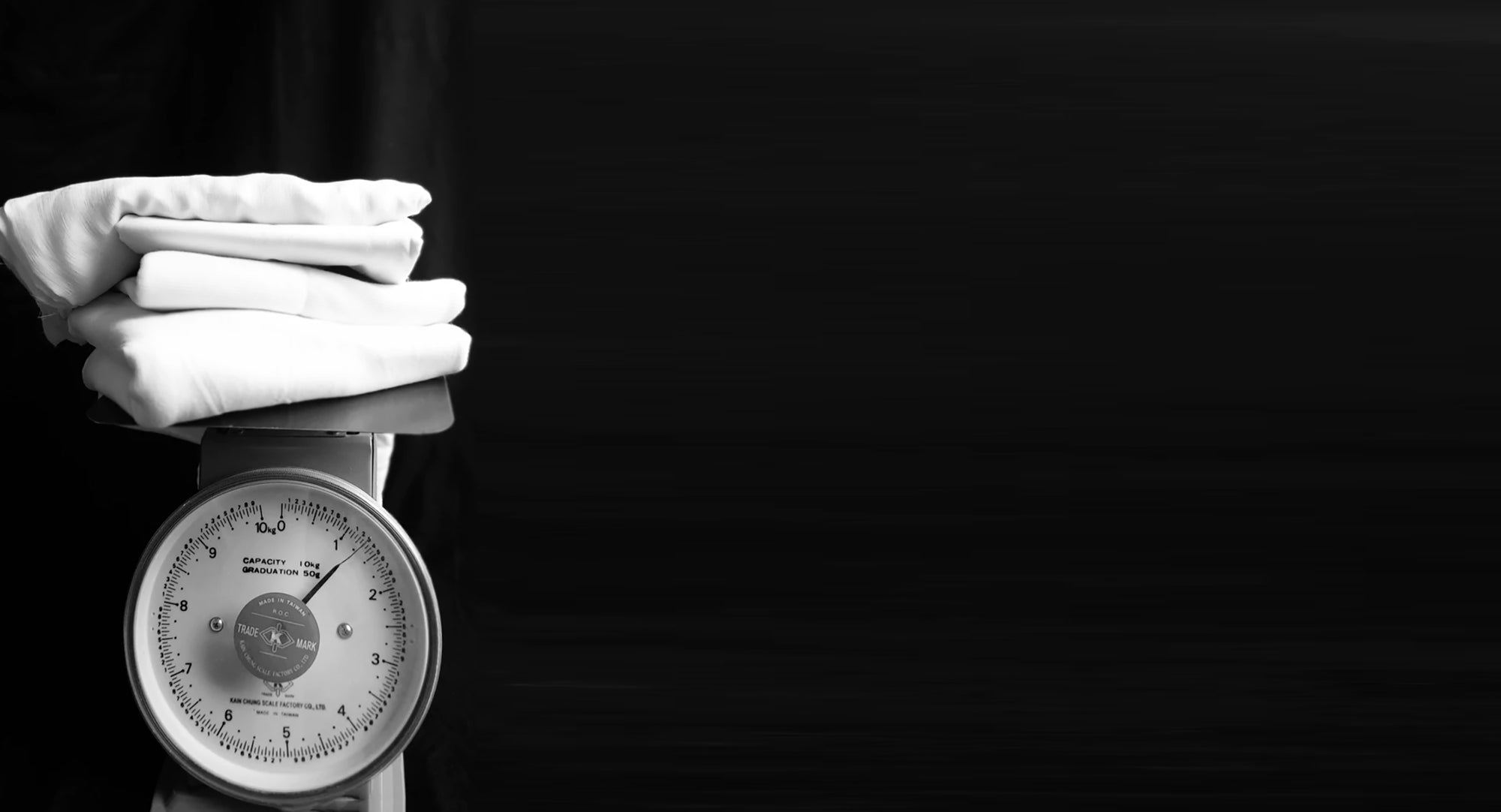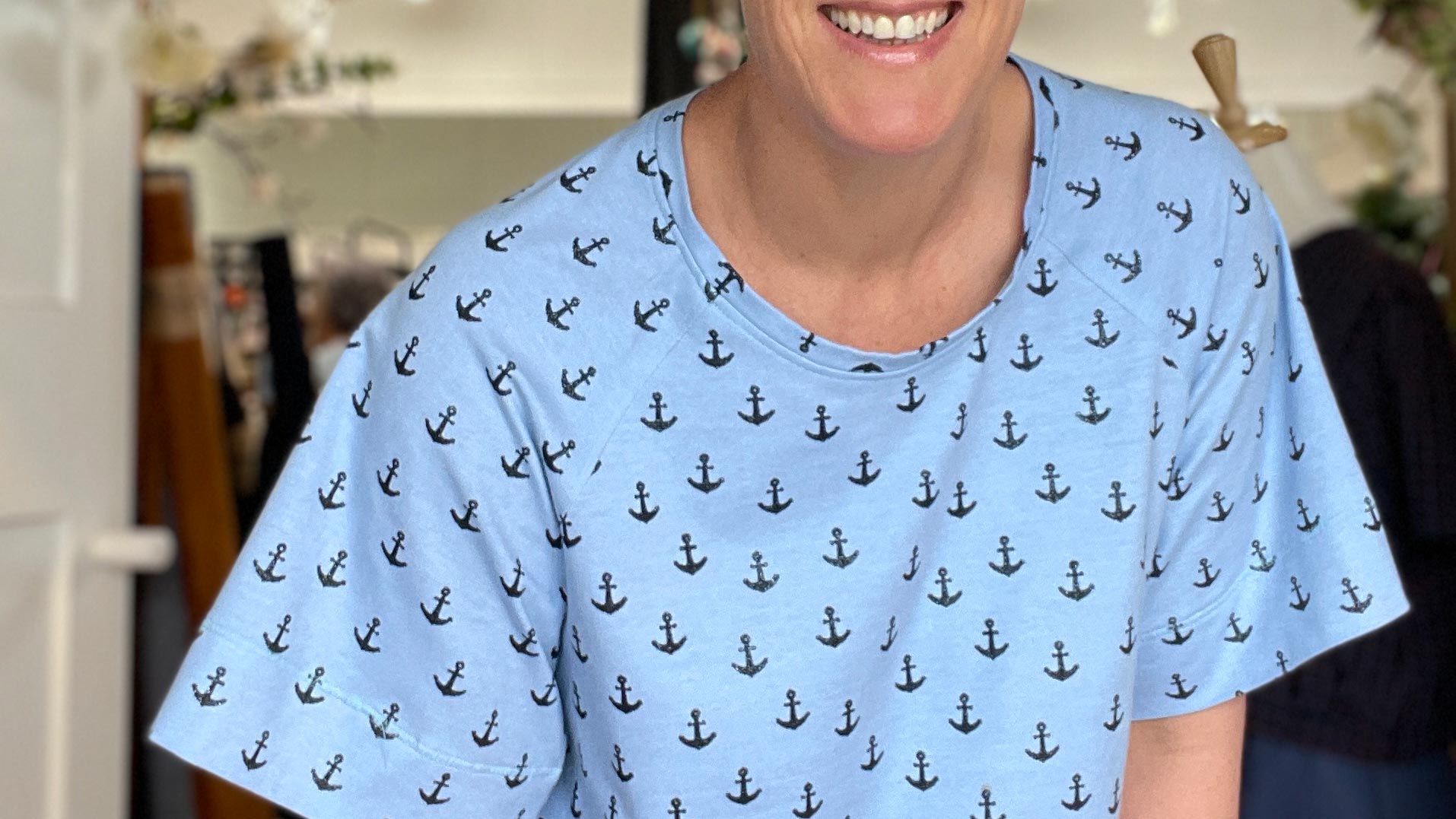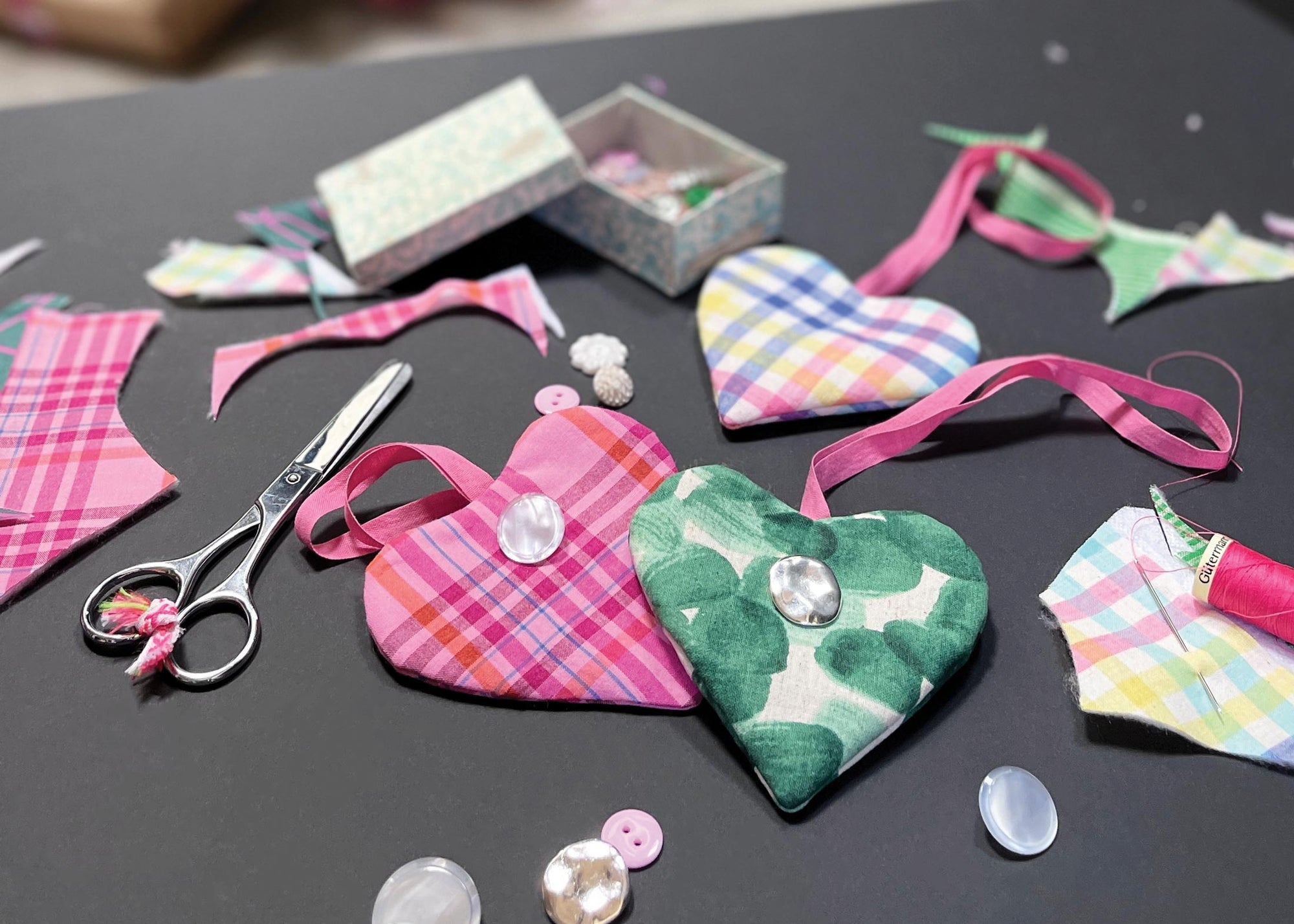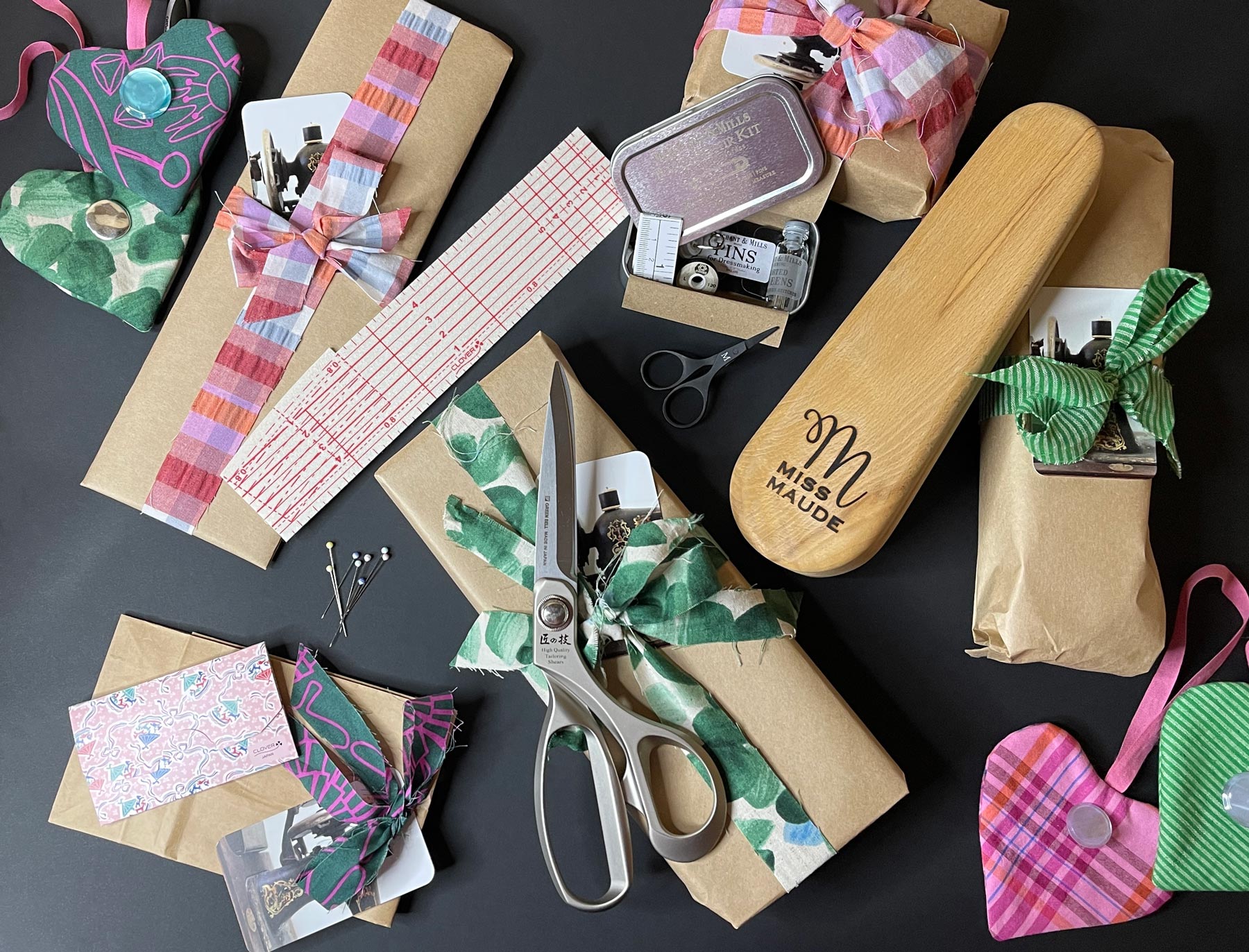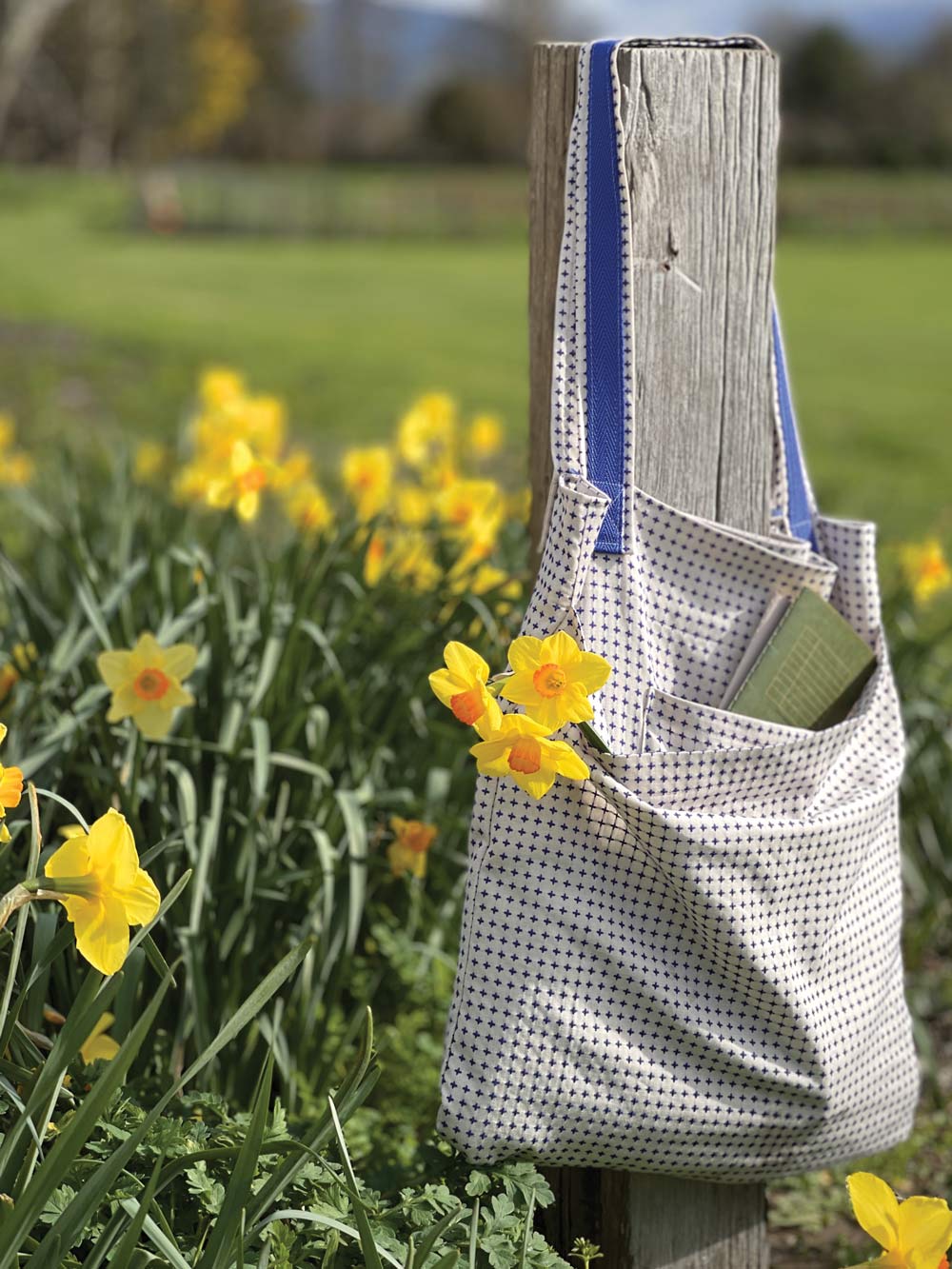Is knowing the weight of fabric helpful?
Short Answer - Yes.  Have you ever seen a fabric online but been unable to commit to buying it as you aren’t sure what it is like in real life? Yes, photos will give you a good idea of colour and drape but how sure can you be on the weight of the fabric from a picture?
Have you ever seen a fabric online but been unable to commit to buying it as you aren’t sure what it is like in real life? Yes, photos will give you a good idea of colour and drape but how sure can you be on the weight of the fabric from a picture?
There are always going to be lots of different things to consider when choosing a fabric for a project e.g drape, stretchability, softness, colour. You may find something that you think fits the criteria, only to order it online and its lighter or heavier than expected.
By knowing the weight of the fabric, it helps to give a good idea of what to expect from the fabric you are ordering. It also helps you to match an appropriate fabric to a sewing pattern that you have your eye on.
Pattern companies will give you an indication of what types of fabrics are suitable for their patterns; for example The Assembly Line Cuff Top suggests suitable fabrics to be: light-mid weight woven and stretch woven fabrics such as linen, denim, cotton drill, viscose twill, cotton batiste, wool, chambray, double gauze.
These are really good guides but it does assume that you know what all of these fabrics are, how they will drape and feel. Which can sometimes seem a little intimidating if you are just starting out on your sewing journey.
But what do the different weights of fabric really mean and how can it help you choose fabric?
As in the example above, fabric weights are generally divided into three categories:
- light weight
- medium/mid weight
- heavy weight
While these categories aren't set in stone, they are fairly consistent between fabric stores and pattern companies when describing fabrics. Before we give you a run down on what to expect in each weight category, let's explain how the fabric weight is measured.
As fabrics come in varying widths, they are measured in weight by either Grams per Square Metre (GSM) or Ounces per Square Yard (Oz).
This simply tells us how much fibre is within one square metre or square yard of woven/knitted fabric. The thicker or bulkier the fabric, the heavier it will tend to be.
For example, a denim that weighs 470gsm (14oz) will be thick and sturdy. However a fabric that weighs 135gsm (4oz) will be lighter, for example a viscose or cotton poplin, or a cotton quilting fabric.
At the bottom of this article is the maths needed to determine the weight of a fabric - so you can work it out for yourself!
Weights of Fabrics
A note on fabric opacity : we mention this in each weight category, however opacity is also influenced by fabric colour, pattern, and weave (tight or loose). We have found that the transparency of a fabric that is considered suitable for a particular garment is very much determined by personal preference.
What you may consider appropriately opaque and modest, another may not. If you have any doubt and this is an important aspect for you, we recommend purchasing a sample of fabric first.
Light weight - up to approx. 150gsm / 4.5oz
Think of soft summer dresses, baby swaddles, light summer tops, lighter weight t-shirts, business shirts or blouses. Cotton Lawn - approx. 70gsm / 2oz
Cotton Lawn - approx. 70gsm / 2oz
These can sometimes be transparent(ish) and if a natural fibre, may crease easily.
(see note above re opacity).
Examples include: lawn, viscose crepe, cotton poplin, lighter weight linens.
Medium weight - approx. 150gsm - 270gsm / 4.5 oz - 8oz
Think of linen trousers and dresses, traditional business suits and skirts, your trusty flannel shirt, cotton drill trousers, sweatshirts.  Maison Washed Linen - 185gsm / 5.4oz
Maison Washed Linen - 185gsm / 5.4oz
Fabrics in this weight range are likely to be opaque however some could be transparent(ish) dependent on the colour, weave of the fabric and personal preference (see note above).
Examples include: Linen, French Terry, Jersey, Interlock Jersey, Cotton Chambray or Flannel and Wool Suiting.
Heavy weight - 270gsm / 8oz - upwards
Think of denim jeans, canvas bags, warm winter coats and upholstery fabric.  Stretch Cotton Denim - 295gsm / 8.5oz
Stretch Cotton Denim - 295gsm / 8.5oz
Fabrics in this weight range will tend to be stiffer and sturdier, although depending on the fabric content they can still have good drape especially if it is a wool coating with some cashmere or viscose in it.
Fabrics that are in this weight range include Needlecord, Denim, Wool coating, Tweed and Canvas.
Fabrics in this weight range are most likely to be opaque, (see note above).
Typical weights for Garments
We've listed below common weights of fabric to use for various garments - but please remember that while these are common combinations, one of the beautiful things about sewing is that you can go wherever your imagination takes you. If you're willing to experiment, then there really are no rules! Tops - generally from very light to medium weight. While the pattern that you are using will influence the fabric you should use, there is nothing stopping you from experimenting using a heavier weight fabric. For example you may choose a heavier weight fabric to create a structured look - but in doing so you will need to consider the ease of movement you will have, particularly across the shoulders/back and arms.
Tops - generally from very light to medium weight. While the pattern that you are using will influence the fabric you should use, there is nothing stopping you from experimenting using a heavier weight fabric. For example you may choose a heavier weight fabric to create a structured look - but in doing so you will need to consider the ease of movement you will have, particularly across the shoulders/back and arms.
This is not an area you want to be restricted and always something to remember when choosing fabric! A solution may be to size up to give more ease; or perhaps add in extra ease with pleats?
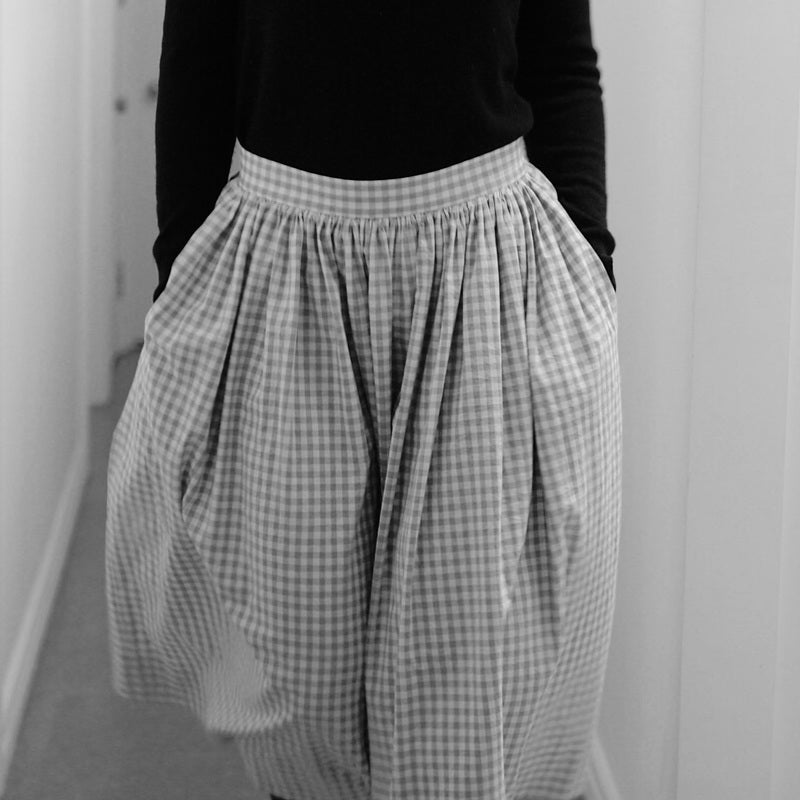 Dresses and Skirts - anything from very light to heavy weight depending on your taste, style of dress, and the season. Floaty dresses with a lot of ease (ie room to move, or for an extra helping of dessert!), can be made from light weight fabrics such as a lawn or viscose crepe. Closely fitted dresses will have more strain put on the seams and fabric during wear - therefore they generally require a fabric with a tighter weave, need to be lined, or to be sewn with a knit fabric that will move with the body. Tightly woven medium weight fabrics are often good for fitted dresses and skirts.
Dresses and Skirts - anything from very light to heavy weight depending on your taste, style of dress, and the season. Floaty dresses with a lot of ease (ie room to move, or for an extra helping of dessert!), can be made from light weight fabrics such as a lawn or viscose crepe. Closely fitted dresses will have more strain put on the seams and fabric during wear - therefore they generally require a fabric with a tighter weave, need to be lined, or to be sewn with a knit fabric that will move with the body. Tightly woven medium weight fabrics are often good for fitted dresses and skirts.  Trousers - from medium to heavy weight fabric. The fabric needs to be sturdy enough to be able to take the stress that sitting and standing puts on seams. A fabric that is too light weight or a very loose weave will eventually start to pull apart at the seams and/or wear through at the seat. If you are making loose, wide leg trousers you will be able to use a light weight fabric (such as a viscose crepe approx 120gsm +) - this will give a drapey look which can be wonderfully elegant for evening wear or light and breezy for casual summer days. Don't expect them to be hard wearing though! For more durable trousers look for something at least 200gsm with a tighter weave.
Trousers - from medium to heavy weight fabric. The fabric needs to be sturdy enough to be able to take the stress that sitting and standing puts on seams. A fabric that is too light weight or a very loose weave will eventually start to pull apart at the seams and/or wear through at the seat. If you are making loose, wide leg trousers you will be able to use a light weight fabric (such as a viscose crepe approx 120gsm +) - this will give a drapey look which can be wonderfully elegant for evening wear or light and breezy for casual summer days. Don't expect them to be hard wearing though! For more durable trousers look for something at least 200gsm with a tighter weave.
Denim Fabric
Denim is the obvious choice for sturdy hardwearing trousers - and of course a wardrobe staple for so many! Normally listed with their weight in ounces - there is a large variety of denim to choose from.
 Denims range in weight from about 6oz through to about 15oz, and we go into a lot more detail in our Denim Buying Guide.
Denims range in weight from about 6oz through to about 15oz, and we go into a lot more detail in our Denim Buying Guide.
How to work out the weight of your fabric

To really get a handle on what the different weights of fabric mean we recommend weighing and comparing fabrics that you already have at home. This might be fabrics in your stash, or if you're just starting out - grab a sheet, blanket, towel, scarf or any other flat material that you can easily measure (square or rectangle). This will certainly give you a jumping off point!
You will need to:
- weigh your fabric: total weight in grams
- measure the length in metres
- measure the width in metres
- add these figures to the following formula:
weight(g) / length(m) x width(m) = weight of fabric in gsm
For example, I have a piece of Viscose Linen Fabric that is 140cm wide and 150cm in length. I weighed it and it is 300g.
300 / 1.5 x 1.4 = 143gsm
or:
I have a serviette that is 30cm (0.3m) x 40cm (0.4m) and weighs 20grams
20 / 0.3 x 0.4 = 167gsm
Conclusion
Knowing and understanding fabric weight will help give you confidence on what a fabric will be like when you shop online for fabrics - you will also need to remember that the type of fibres used to create the cloth, and how they are woven or knitted will also play into the look and feel of the fabric.
We've found that keeping a notebook with scraps of fabrics can be really useful - by noting the composition and weight of each fabric you can then compare these to descriptions of fabrics you see online to help you make more confident choices when selecting your next piece of fabric.
If you are still unsure, please give us a call or get in touch - we are always happy to have a chat with you about whether your fabric choice would work for your project! We want to make sure that you are comfortable with your choice!
SAVE IT FOR LATER....
